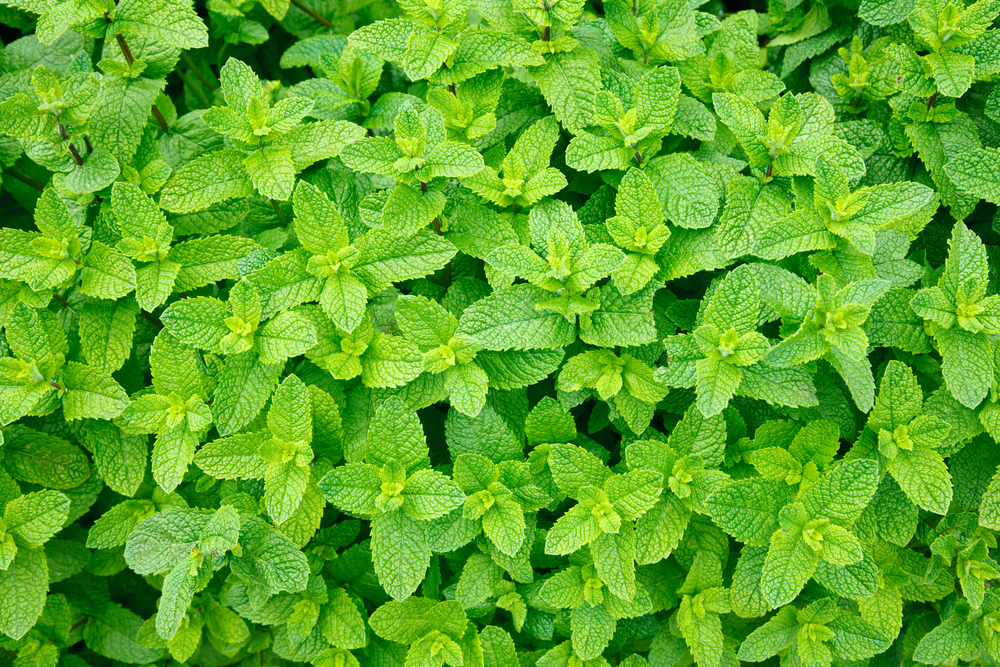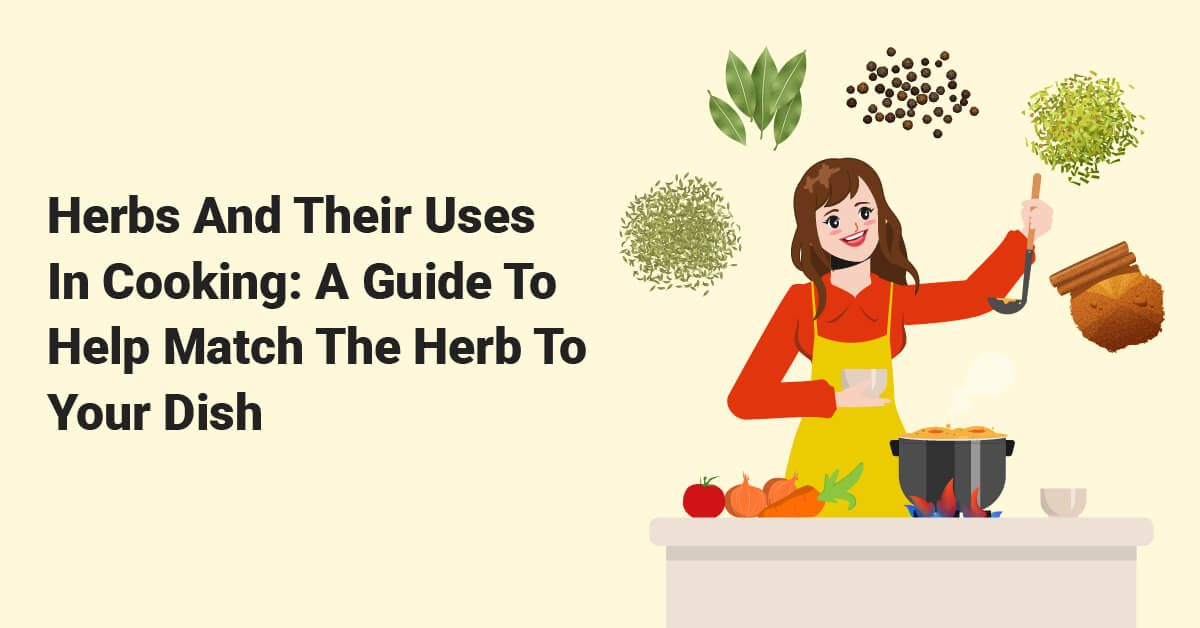Rosemary is an herb that has been used for centuries in cooking and medicine. It is a popular herb in Mediterranean cuisine and is known for its strong taste and aroma.
If you are wondering what rosemary tastes like, it has a flavor that is often described as piney, resinous, astringent, peppery, lemony, and woodsy. It features notes of evergreen, citrus, lavender, sage, and mint.

The taste of rosemary can be pungent and sharp with a woody/camphor-like aroma. It is slightly bitter and astringent in flavor, which makes it good for marinades and sauces.
Rosemary has a strong, pungent aroma, and its taste can be bitter, but it also has a sweet undertone. If you want to use rosemary in your cooking, it is important to understand its taste profile and how to use it in different dishes.
Key Takeaways
- Rosemary has a strong taste and aroma that is piney, resinous, astringent, peppery, lemony, and woodsy, featuring notes of evergreen, citrus, lavender, sage, and mint.
- The taste of rosemary can be pungent and sharp with a woody/camphor-like aroma. It is slightly bitter and astringent in flavor, which makes it good for marinades and sauces.
- Understanding the taste of rosemary is important for using it in different dishes.
Understanding the Taste of Rosemary
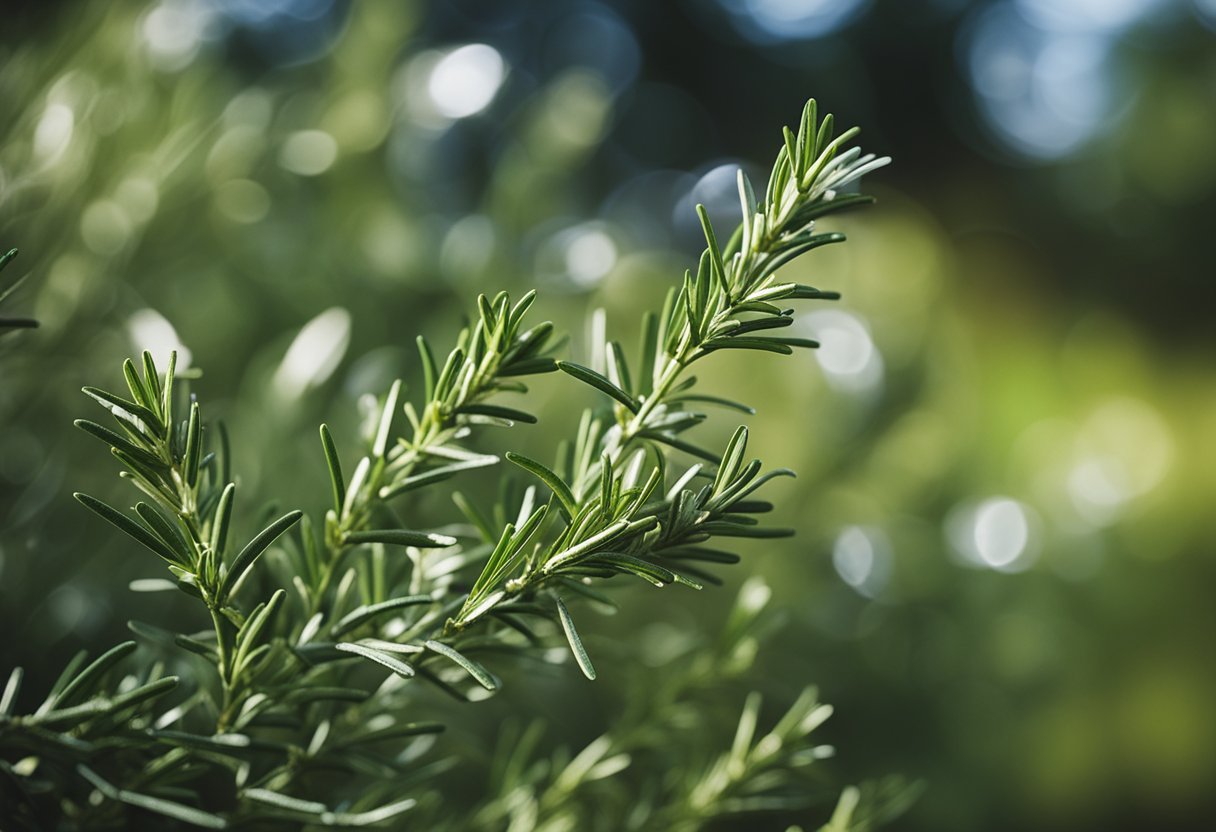
As someone who has tasted rosemary before, I can confidently say that it is a unique herb with a strong taste and aroma. When you taste rosemary, you will notice a combination of flavors that are both bitter and sweet. The herb has a pungent aroma that is reminiscent of pine and mint.
Rosemary has a woody flavor that is often described as piney, resinous, astringent, and peppery. The herb has a slightly bitter taste that is balanced out by a sweet undertone. The bitter taste of rosemary makes it a great addition to marinades and sauces.
In addition to its woody flavor, rosemary also has notes of sage, lemon, and pepper. The herb has a resinous taste that is similar to pine and evergreen. Overall, the taste of rosemary is complex and multi-dimensional.
When cooking with rosemary, it is important to use it sparingly as its strong taste can easily overpower other flavors in a dish. The herb pairs well with other herbs such as thyme, oregano, and sage. It is often used to flavor meats, vegetables, and soups.
In conclusion, rosemary is a unique herb with a strong taste and aroma. Its flavor is complex and multi-dimensional, with notes of pine, woody, bitter, sage, lemon, pepper, sweet, and spicy. When cooking with rosemary, it is important to use it sparingly and pair it with other herbs to balance out its strong taste.
Aroma of Rosemary
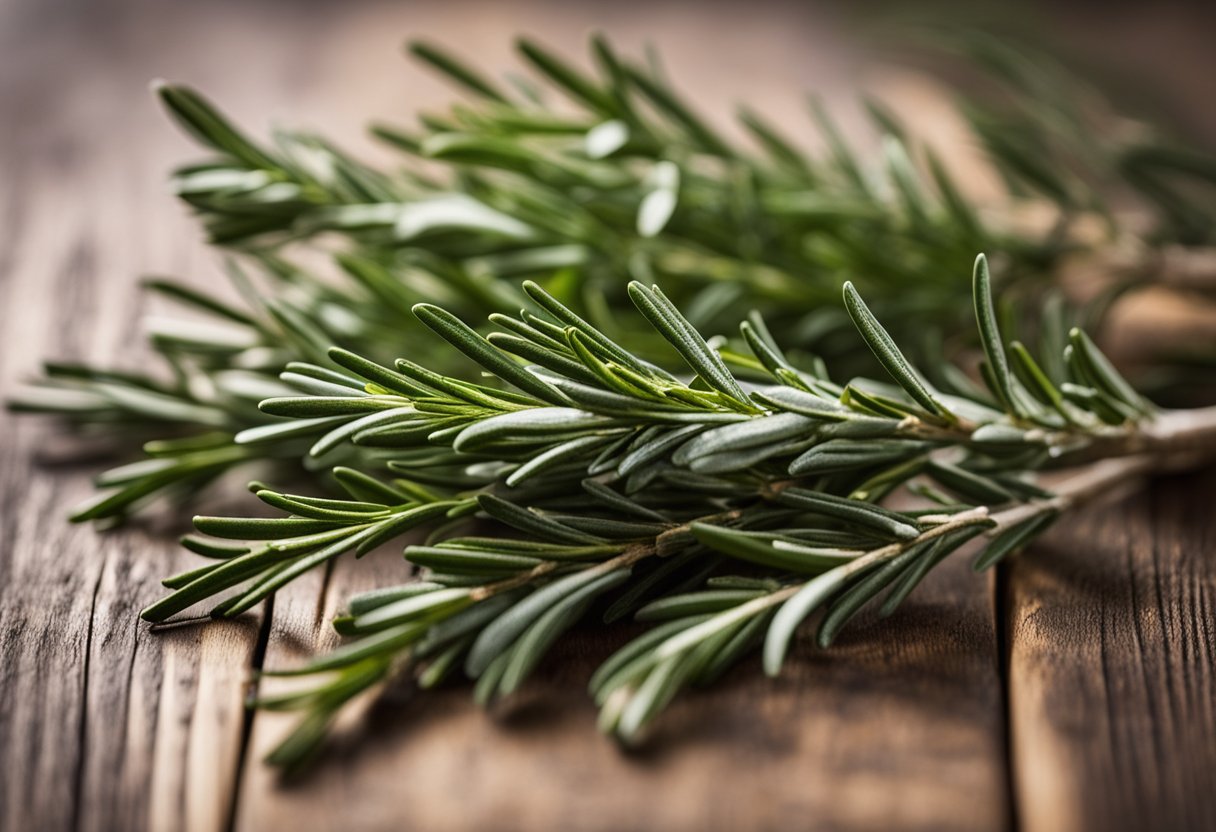
I have always been fascinated by the aroma of rosemary. It has a distinct scent that is both fragrant and oily. The aroma is so intense that it can fill a room with its perfume. When I use rosemary in my cooking, the aroma fills my kitchen and makes my mouth water.
The scent of rosemary is often described as earthy, woody, and slightly medicinal. It has a pungent aroma that can be overpowering if used in excess. However, when used in moderation, it can add depth and complexity to a dish.
Rosemary is known for its fragrant aroma, which is due to the presence of essential oils in its leaves. These oils are what give rosemary its distinct scent and flavor. The aroma of rosemary is so powerful that it is often used in perfumes and other fragrances.
In conclusion, the aroma of rosemary is one of its most distinctive features. It has a fragrant, oily scent that is both earthy and medicinal. When used in moderation, it can add depth and complexity to a dish, and its powerful aroma can fill a room with its perfume.
Fresh vs Dried Rosemary
As a cook, I often wonder if there is a difference between fresh and dried rosemary. After doing some research, I discovered that there is a significant difference between the two.
Fresh rosemary has a more subtle flavor than dried rosemary. The fresh herb has a slightly sweet and floral taste with a piney undertone. On the other hand, dried rosemary is much more concentrated and potent. It has a stronger, more pungent flavor that can easily overpower other ingredients in a dish.
The concentration of flavor in dried rosemary means that you need to use less of it than fresh rosemary. In fact, the standard conversion ratio is one part of dried rosemary for three parts fresh rosemary or 1 tablespoon of fresh rosemary = 1 teaspoon of dried rosemary.
So, if a recipe calls for fresh rosemary and you only have dried rosemary, you should use less of the dried herb to avoid overpowering the dish.
When using fresh rosemary, it’s important to note that the leaves are quite tough and woody. You’ll need to chop them finely before using them in a dish to avoid having large, unpleasant pieces of rosemary in your food.
Dried rosemary, on the other hand, is much easier to work with and can be added to a dish whole or chopped.
In summary, fresh and dried rosemary have different concentrations of flavor, with dried rosemary being much more potent. When substituting one for the other, keep in mind the conversion ratio of one part dried rosemary to three parts fresh rosemary.
Finally, fresh rosemary needs to be chopped finely before use, while dried rosemary can be added whole or chopped.
Rosemary in Cooking
https://www.youtube.com/watch?v=6K_JesBKE08
Rosemary is a versatile herb that adds a unique flavor to many dishes. Its leaves have a piney, resinous, astringent, peppery, lemony, and woodsy taste, making it an excellent seasoning for meat, vegetables, and soups.
When cooking with rosemary, it is essential to use it in moderation, as its flavor can be overpowering. A little goes a long way, and it is best to use fresh rosemary leaves. Dried rosemary can be used, but it should not be cooked for too long, as it can become bitter.
Rosemary is an excellent herb for seasoning lamb, potatoes, fish, and other meats. It is also a great addition to stews, casseroles, and soups. When making a marinade, rosemary pairs well with garlic, lemon, and olive oil.
To use rosemary in cooking, remove the leaves from the stem and chop them finely. Alternatively, you can use whole sprigs of rosemary and remove them before serving. Rosemary can be added to dishes at any point during the cooking process. It can be used to flavor sauces, cheese, and vegetables.
When roasting meat, rosemary can be added to the oven to infuse the meat with its flavor. It can also be used to season steaks and other cuts of meat before cooking. Rosemary is an excellent herb for adding flavor to salads and other dishes that require a little something extra.
Overall, rosemary is a great herb for cooking with. Its unique flavor profile makes it a favorite among many chefs and home cooks. When using rosemary in cooking, it is essential to use it in moderation and to experiment with different dishes to find what works best.
Health Benefits of Rosemary
I love using rosemary in my cooking not only because of its unique taste and aroma but also because of its many health benefits. Rosemary is a herb that has been used for centuries in traditional medicine due to its medicinal properties. In this section, I will discuss some of the health benefits of rosemary.
Antioxidant Properties
Rosemary is rich in antioxidants, which are compounds that protect our cells from damage caused by free radicals.
Free radicals are molecules that can cause oxidative stress, which can lead to chronic diseases such as cancer, heart disease, and Alzheimer’s disease. The antioxidants in rosemary can help prevent or reduce the risk of these diseases.
Anti-inflammatory Properties
Rosemary has anti-inflammatory properties that can help reduce inflammation in the body. Chronic inflammation is linked to many diseases, including arthritis, heart disease, and cancer. By reducing inflammation, rosemary can help prevent or manage these diseases.
Digestive Health
Rosemary can improve digestion and reduce digestive problems such as bloating, gas, and constipation. This is because rosemary contains essential oils that have a carminative effect, which means they can help relieve digestive problems.
Immune System Booster
Rosemary is a good source of iron and calcium, which are essential minerals that are important for a healthy immune system. Iron is needed to make hemoglobin, which carries oxygen in the blood, while calcium is important for bone health and muscle function.
Essential Oil
Rosemary essential oil is used in aromatherapy to promote relaxation and reduce stress. It has a calming effect on the mind and body and can also help improve memory and concentration.
Overall, rosemary is a herb that not only adds flavor to our food but also provides many health benefits. By incorporating rosemary into our diet, we can improve our overall health and well-being.
Rosemary in Different Regions
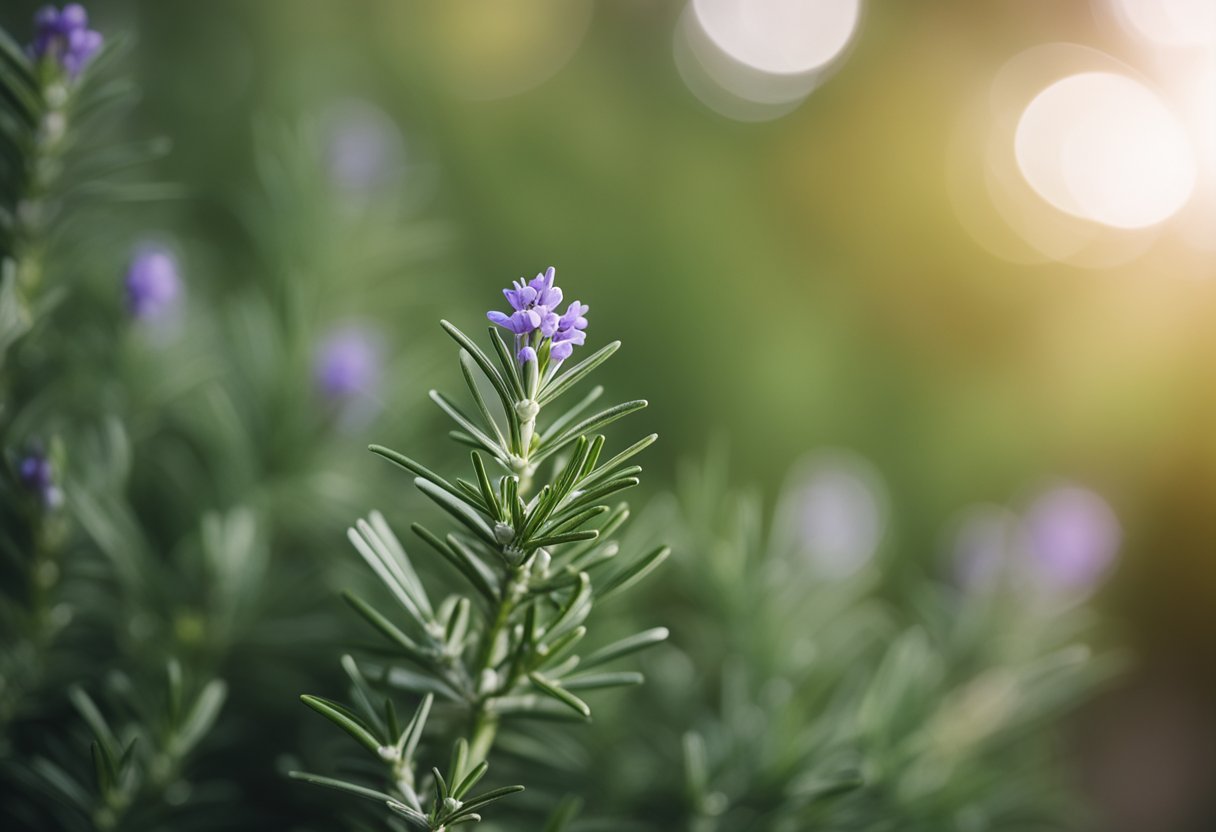
Rosemary is a popular herb that is used in various cuisines around the world. Its flavor and aroma can vary depending on the region where it is grown and how it is used in cooking. Here are some examples of how rosemary is used in different regions:
Mediterranean
Rosemary is a staple herb in Mediterranean cuisine. It is often used in dishes like roasted lamb, grilled fish, and tomato-based sauces.
In Italy, rosemary is a key ingredient in the classic dish, saltimbocca alla romana, which is made with veal, prosciutto, and sage. In Greece, rosemary is used in traditional dishes like moussaka, a layered eggplant and beef casserole.
Other Regions
Outside of the Mediterranean region, rosemary is also used in other cuisines. In French cuisine, rosemary is used in dishes like ratatouille, a vegetable stew made with eggplant, zucchini, and tomatoes.
In South American cuisine, rosemary is used to flavor grilled meats like beef and chicken. In Indian cuisine, rosemary is used in spice blends like garam masala.
Flavor Profiles
Rosemary has a strong, piney flavor with hints of citrus and mint. It pairs well with other herbs like thyme, oregano, and sage. When used in cooking, it can add depth and complexity to a dish.
However, it is important to use rosemary sparingly, as its flavor can easily overpower other ingredients.
In conclusion, rosemary is a versatile herb that is used in many different cuisines around the world. Its flavor and aroma can vary depending on the region where it is grown and how it is used in cooking.
Whether you are cooking Mediterranean dishes or experimenting with other flavors, rosemary is a great herb to have in your kitchen.
Appearance and Family of Rosemary
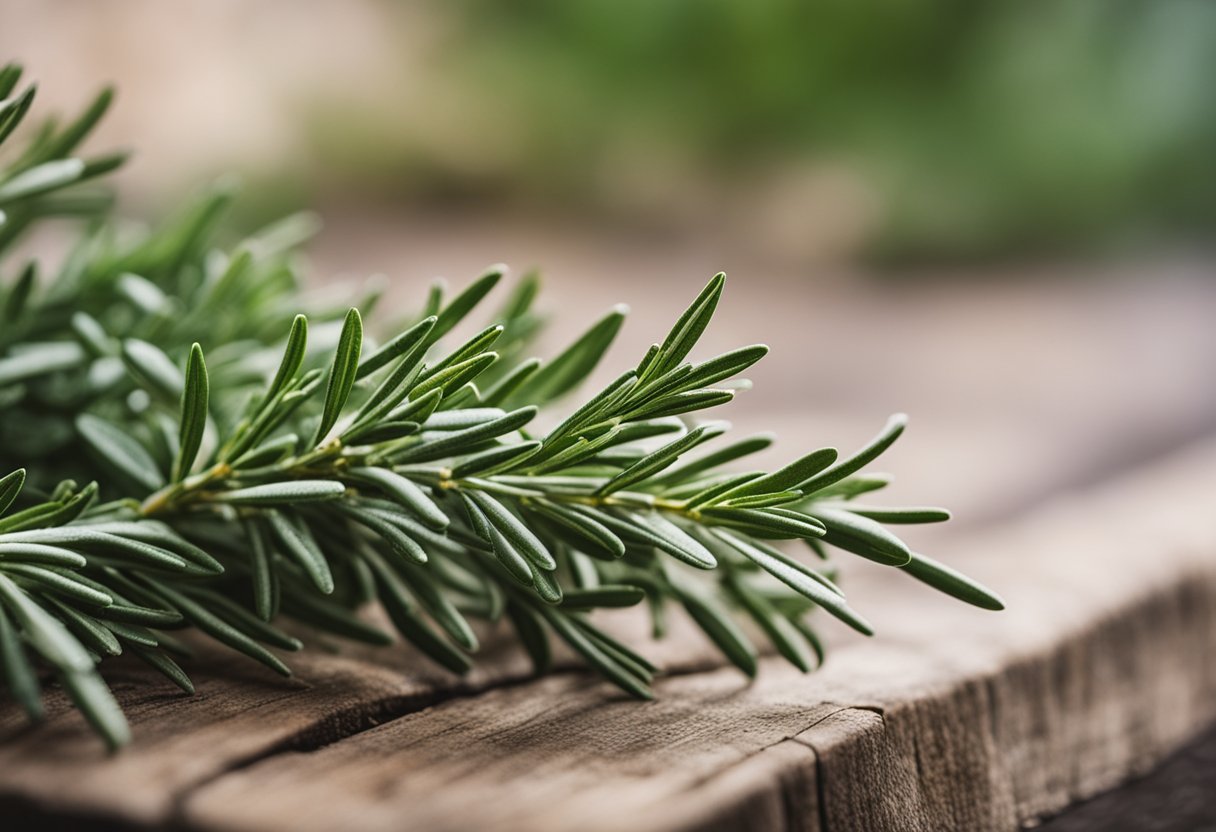
Rosemary is an evergreen herb with needle-like leaves that belongs to the mint family. It is a popular culinary herb that is native to the Mediterranean region. The plant has a bushy appearance and can grow up to 6 feet tall in favorable conditions.
Rosemary leaves are dark green on top and lighter on the underside. The leaves are about 1-2 inches long and are arranged in pairs along the stem. The plant produces small, delicate flowers that can be purple, pink, or white in color. The flowers bloom in the late spring and early summer.
The plant is known for its strong aroma and flavor, which is why it is often used in cooking. The leaves are harvested and used either fresh or dried. The dried leaves retain their flavor well and can be stored for a long time.
In addition to its culinary uses, rosemary has also been used for medicinal purposes for centuries. It has been used to treat a variety of ailments, including indigestion, headaches, and joint pain. Its essential oil is also used in aromatherapy to promote relaxation and reduce stress.
Overall, rosemary is a versatile herb that is easy to grow and has many uses. Its unique appearance and strong flavor make it a popular choice in both the culinary and medicinal worlds.
Rosemary in Other Uses

Rosemary is not only a popular herb in cooking, but it is also used in other ways. Here are some of the other uses of rosemary:
Oil
Rosemary oil is extracted from the leaves of the rosemary plant. It is often used in aromatherapy and massage therapy due to its soothing and relaxing properties. The oil is also used in hair care products as it is believed to promote hair growth and prevent hair loss.
Perfumes
Rosemary is a popular ingredient in perfumes due to its fresh and herbaceous scent. It is often combined with other essential oils such as lavender and peppermint to create a unique fragrance.
Bread
Rosemary is a popular herb to add to bread dough. It gives the bread a unique flavor and aroma. Rosemary bread is often served with olive oil and balsamic vinegar as a dipping sauce.
Tea
Rosemary tea is made by steeping fresh or dried rosemary leaves in hot water. It is believed to have a calming effect on the body and can help with digestion. Rosemary tea is also used as a natural remedy for headaches and migraines.
Focaccia
Focaccia is a type of Italian bread that is often topped with rosemary, olive oil, and sea salt. The rosemary adds a delicious flavor to the bread and complements the other ingredients perfectly.
Overall, rosemary is a versatile herb that can be used in many different ways. Whether you are cooking with it, using it in aromatherapy, or adding it to your bread dough, rosemary is sure to add a unique flavor and aroma to any dish or product.
Comparing Rosemary with Other Herbs
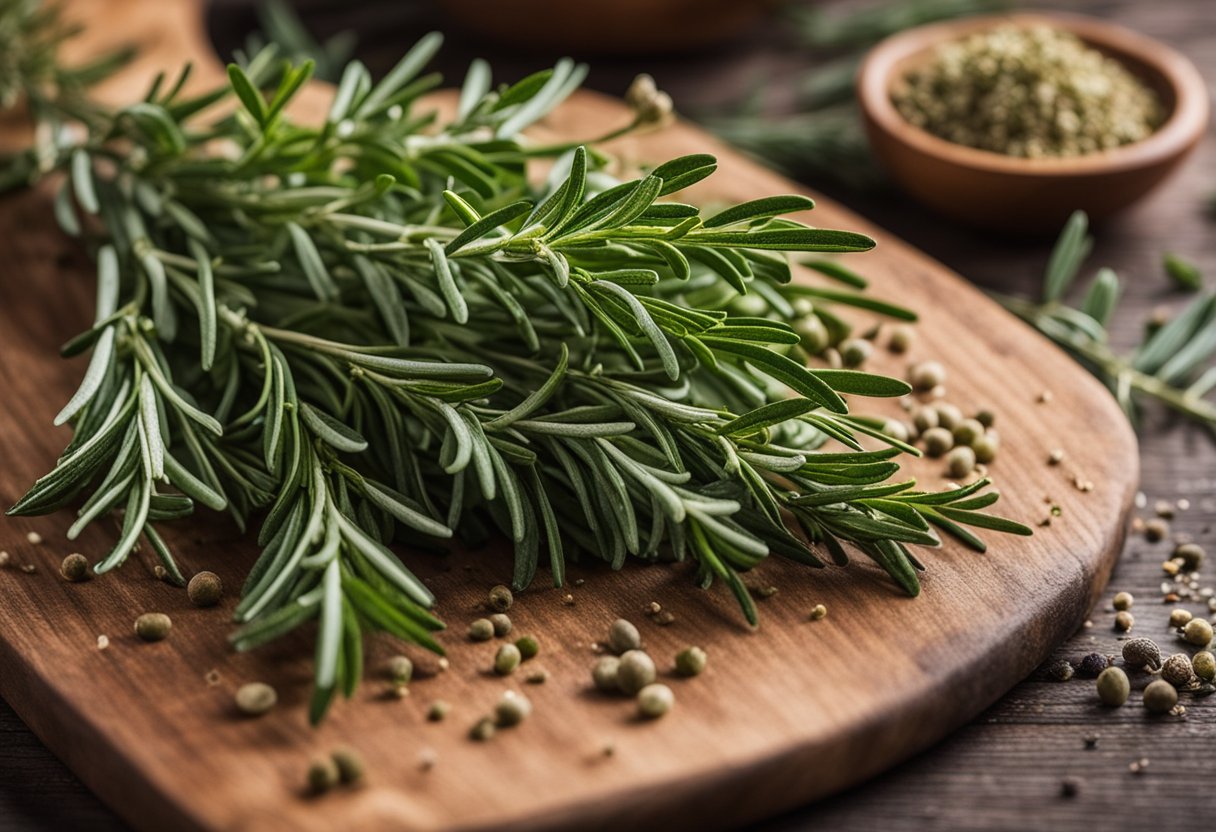
As an herb, rosemary has a unique flavor that sets it apart from other herbs. However, it is often used in combination with other herbs to enhance the overall flavor of a dish. Here are some common herbs that are often compared to rosemary, and how they differ:
Thyme
Thyme has a similar earthy and woody flavor to rosemary, but it is milder and slightly sweeter. It is often used in combination with rosemary in meat dishes, stews, and soups.
Garlic
Garlic has a pungent and spicy flavor that is quite different from rosemary. However, both herbs are often used together in Italian and Mediterranean cuisine to add depth of flavor to dishes.
Lavender
Lavender has a floral and slightly sweet flavor that is quite different from rosemary. While it is not often used in savory dishes, it can be used in combination with rosemary in desserts and baked goods.
Marjoram
Marjoram has a mild and sweet flavor that is similar to oregano. It is often used in combination with rosemary in meat dishes, stews, and soups.
Tarragon
Tarragon has a sweet and slightly anise-like flavor that is quite different from rosemary. However, it is often used in combination with rosemary in French cuisine to add depth of flavor to dishes.
Minty
Mint has a cool and refreshing flavor that is quite different from rosemary. While it is not often used in savory dishes, it can be used in combination with rosemary in cocktails and other beverages.
Overall, while rosemary has a unique flavor, it is often used in combination with other herbs to enhance the overall flavor of a dish.
Frequently Asked Questions

What are the benefits of using rosemary as a spice?
Rosemary has several health benefits when used as a spice. It contains antioxidants that help to protect the body from damage caused by free radicals. It can also help to improve digestion and reduce inflammation. Additionally, rosemary has been shown to improve cognitive function and memory.
What does rosemary look like and how is it recognizable?
Rosemary is a woody, perennial herb with needle-like leaves that are dark green on top and silver on the bottom. It has small, blue flowers that bloom in the summer. It is easily recognizable by its strong, pungent scent, which is similar to pine and eucalyptus.
Why do some people say that rosemary tastes like soap?
Some people have a genetic variation that makes them more sensitive to the taste of a compound called linalool, which is found in rosemary. Linalool is also found in some soaps and cleaning products, which is why some people may associate the taste of rosemary with soap.
What are some recipes that use rosemary as a key ingredient?
Rosemary is a versatile herb that can be used in a variety of dishes. It pairs well with meats, such as chicken, lamb, and pork, as well as with vegetables, such as potatoes, carrots, and tomatoes.
Some popular recipes that use rosemary as a key ingredient include rosemary roasted potatoes, rosemary chicken, and rosemary garlic bread.
What are some uses for dried rosemary other than cooking?
Dried rosemary can be used for a variety of purposes other than cooking. It can be added to potpourri or used to make scented sachets. It can also be used in DIY beauty products, such as facial toners and hair rinses.
How would you describe the taste of rosemary in food?
Rosemary has a strong, pungent flavor that is often described as piney, resinous, and slightly bitter. It has a slightly sweet and minty undertone that can be enhanced by roasting or grilling. Its flavor is most prominent in its needle-like leaves and flowers.



